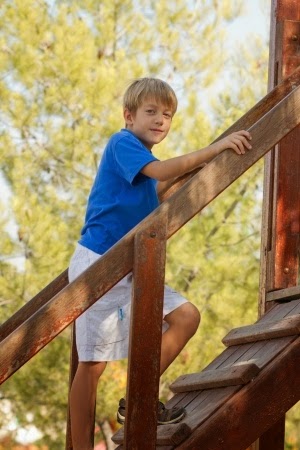
Recess duty was a new experience for me when I became a Montessori teacher, and my first day on the playground was an eye opener. I thought that it would not be that hard to let the children play and get rid of their excess energy. However, the school I was at took a different view of what was considered appropriate play. I was informed that the children were not allowed to play tag or run on the black top because they might fall and get hurt; they could not roll down the hill as they would get dirty; and they were not allowed to play football because it was a contact sport. There was no climbing equipment because of concerns that the children might fall off. The children were not even allowed to shout and play loudly in case they disturbed the other classes. Once winter came and snow covered the playground, the children were not allowed to play in the field and were expected instead to walk around the pre-shoveled area on the blacktop. The children were not happy with these restrictions. They were bored and often took out their frustration on each other. It became a frequent topic at our bi-weekly class meetings.
The Freedom To Play: Skills and Development on the Montessori Playground
I mention this experience because of an article I read recently about a school returning to free play. Swanson Primary School in New Zealand has abandoned playground rules to let children do what they want during playtime. This includes climbing trees, playing in the mud, riding skateboards, and playing contact games. Principal Bruce McLachlan explains their choice, saying, “We want kids to be safe and to look after them, but we end up wrapping them in cotton wool when in fact they should be able to fall over.” His statement is endorsed by Grant Schofield, a professor of public health at Auckland University, who believes that imposing limits on play “ignores the benefits of risk-taking.” By removing all risk, children do not learn how to make decisions or learn about consequences. (School ditches rules and loses bullies, 2014)
Swanson Primary has already seen benefits to allowing children to play freely. There are fewer serious injuries, less vandalism, an increase in classroom concentration, and surprisingly, a decrease in bullying. These benefits can be linked to the fact that the children are more actively engaged in play and have more creative outlets for their energy. David Elkind supports this by saying, “[play] helps children learn the interpersonal skills needed to become effective social beings.” (Elkind, 2007) This was supported as well by developmental psychologist and philosopher Jean Piaget who stated, “It is through game playing, that is, through the give and take of negotiating plans, settling disagreements, making and enforcing rules, and keeping and making promises that children come to understand the social rules which make cooperation possible. As a consequence of this understanding, peer groups can be self governing and their members capable of autonomous, democratic, and moral thinking.” (Piaget, 1950)

The second Montessori school I taught at had a completely different view on recess. This time when I stepped out on the playground to supervise, I was reprimanded for not allowing the children to play. At this school, as long as children were not physically threatening each other, we let them play. They built forts with branches they found in the woods, built fairy river communities along the stream, explored dam engineering with rocks and sticks, and played contact sports. It was liberating for both children and teachers, as we often were invited to play along with them. The children sometimes got hurt, but the worst accident I can remember was a sprained ankle. We called the child’s mother, who came over and took the child to the doctor. Her reaction? It happens; no big deal. The child quickly became a celebrity with her crutches and returned to exploring the playground with the other children the very next day.
Works Cited
Elkind, D. (2007). The Power of Play: Learning What Comes Naturally. Philadelphia: Da Capo Press.
Piaget, J. (1950). The Moral Judgement of the Child. London: Routledge & Kegan Paul.
As much as possible, NAMC’s web blog reflects the Montessori curriculum as provided in its teacher training programs. We realize and respect that Montessori schools are unique and may vary their schedules and offerings in accordance with the needs of their individual communities. We hope that our readers will find our articles useful and inspiring as a contribution to the global Montessori community.
© North American Montessori Center - originally posted in its entirety at Montessori Teacher Training on Friday, January 31, 2014.
© North American Montessori Center - originally posted in its entirety at Montessori Teacher Training on Friday, January 31, 2014.

0 comments:
Post a Comment
Have questions or comments? Let us know what you thought about this article!
We appreciate feedback and love to discuss with our readers further.